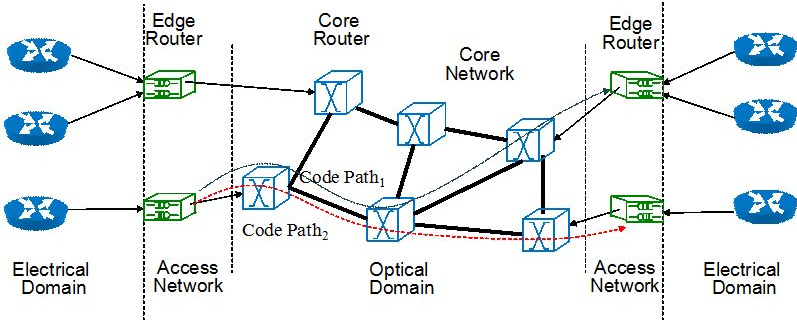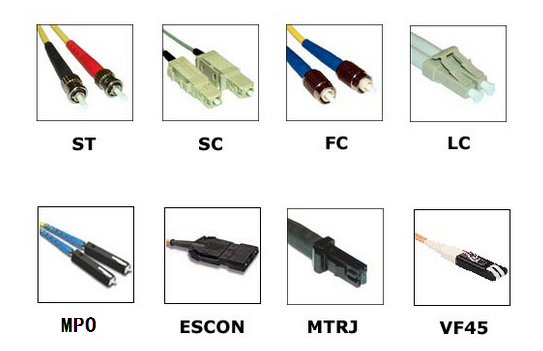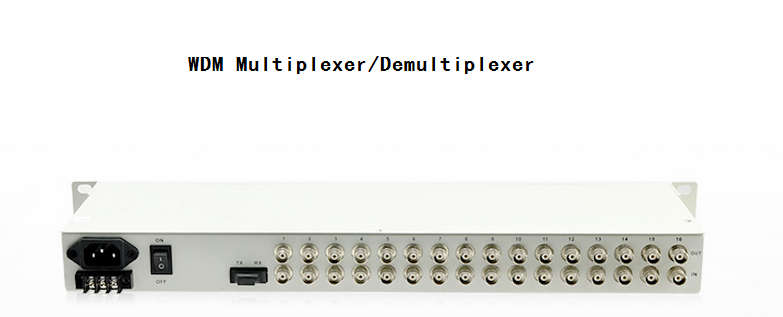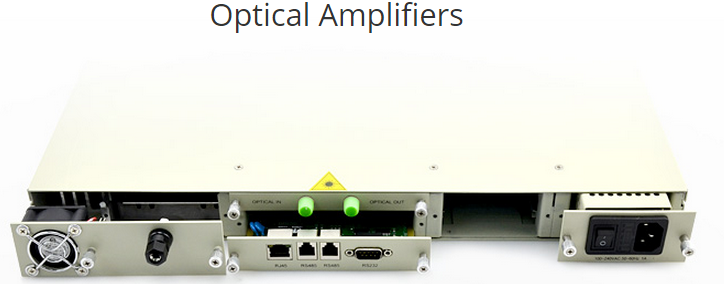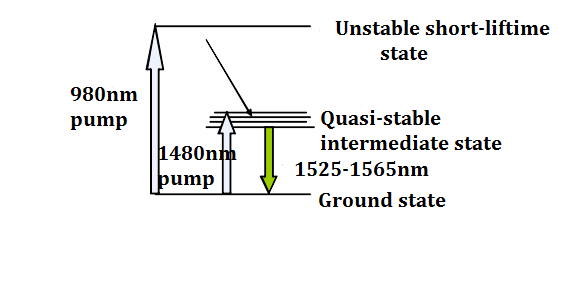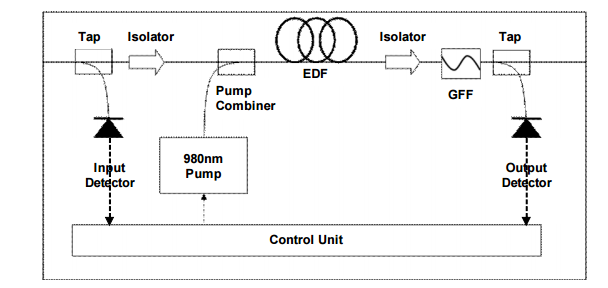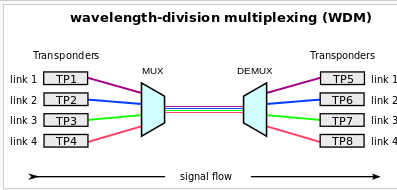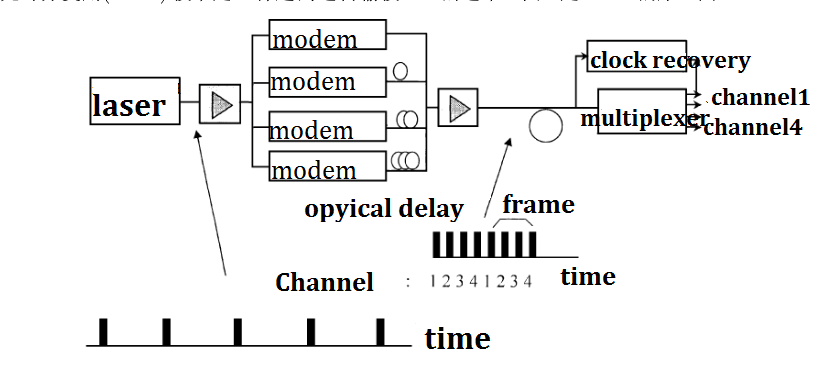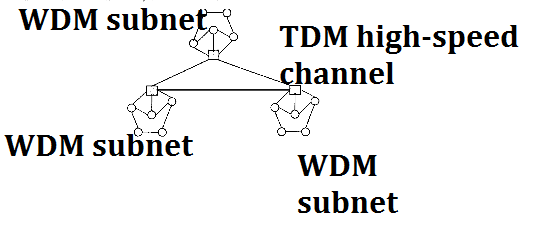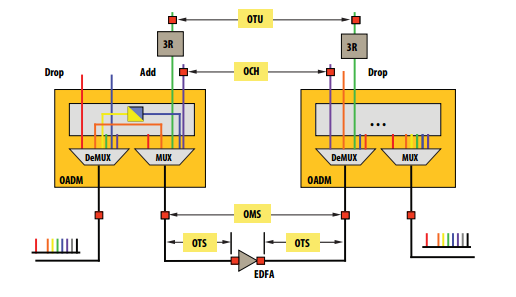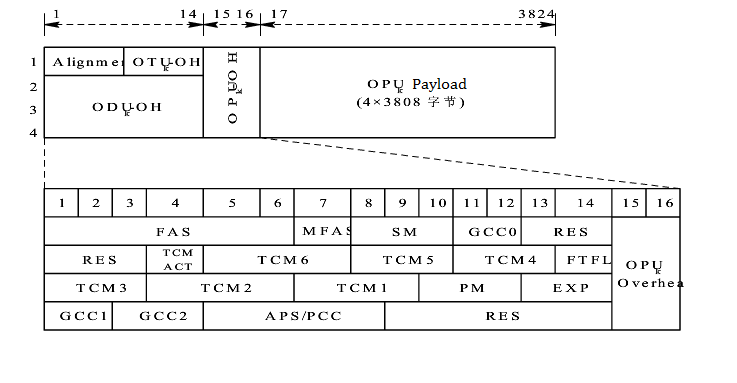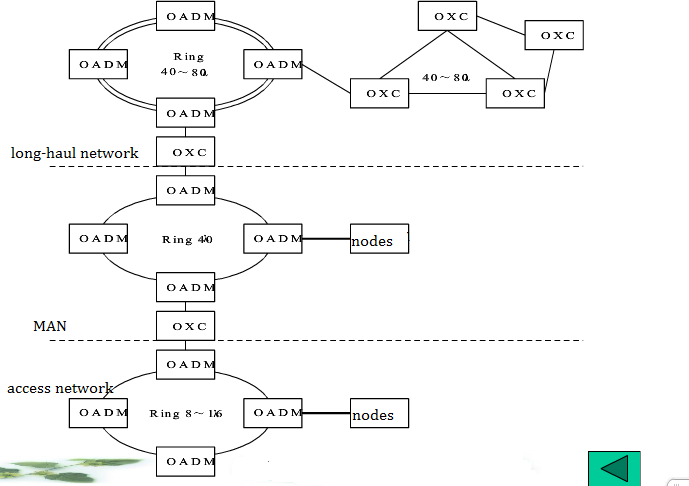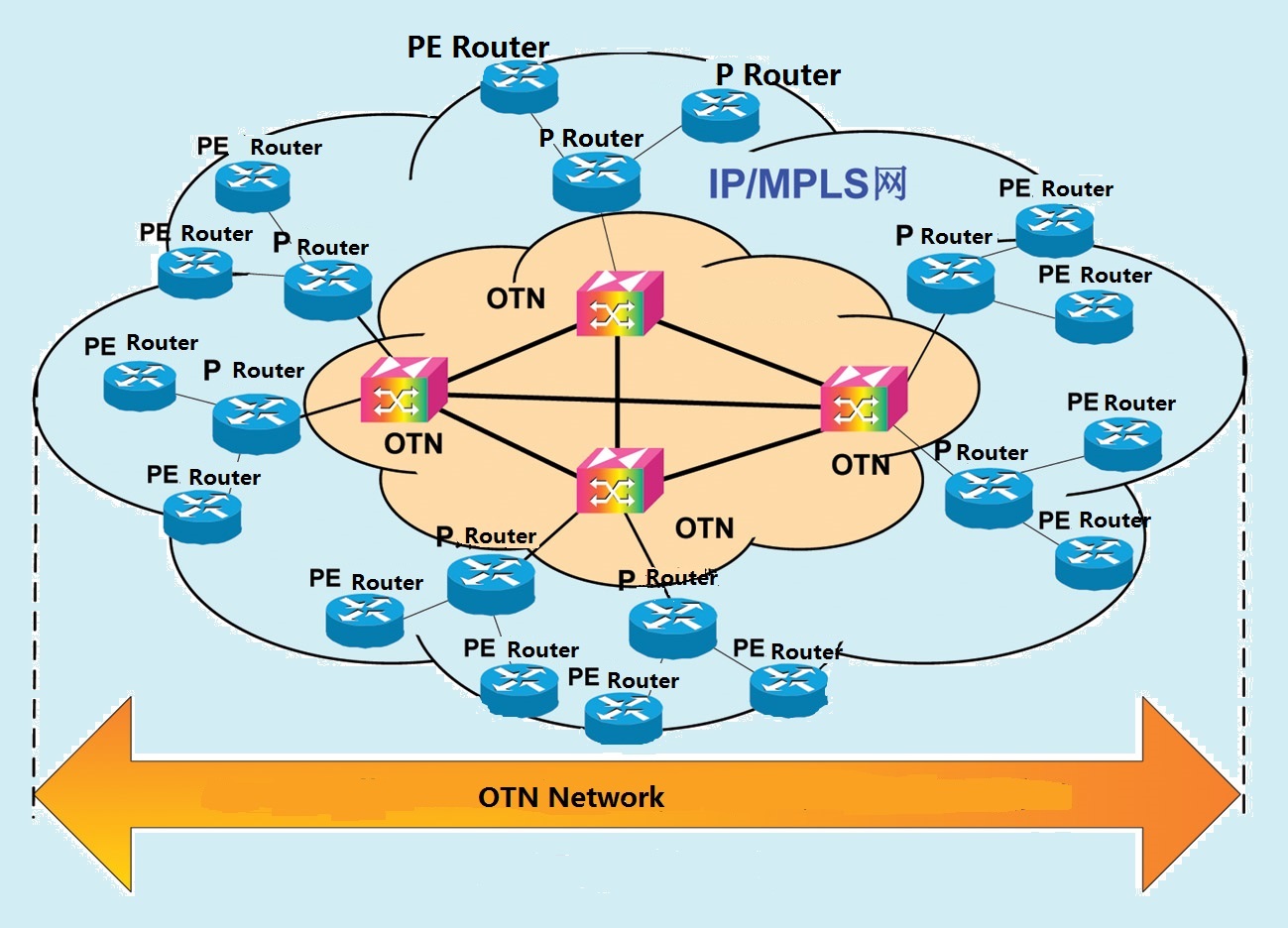1.Background
With the rapid development and globalization of the modern society, a large quantity of data needs to be transmitted, thus resulting in the explosive growth of information content. The explosive growth of information content enables people to places a higher demand on bandwidth, which is a symbol of communication content. However, the electronic bottleneck of photoelectric conversion has restricted the high-speed transmission of data, giving rise to the failure of optical communication network to meet the requirements of high-speed, large-capacity and long-haul transmission. In order to make full use of the potential bandwidth of fiber, continuously improve the transmission rate of fiber and accommodate the explosive growth of communication services, all-optical network (AON) is proposed.
2.What is AON?
All-optical network (AON) is emerging as a promising network for very high data rates, flexible switching and broadband application support. In principle, all-optical network is founded on the premise of keeping the transmission and exchange of data signals entirely in the optical domain from source to destination, thus removing the intermediate electronics to eliminate the so-called electronic bottleneck and allow arbitrary signal formats, bit-rates, and protocols to be transported. In an all-optical network, data signals are always maintained in the optical domain except when they enter or exit the network, as shown in Figure 1. It means that there is no electrical signal processing in the entire transmission, so various transmission modes (PDH, SDH, ATM, etc.) can be applied in the AON to significantly improve the utilization of network resources. Being equipped with excellent transparency, survivability, scalability and compatibility, AON can achieve the data transmission of ultra-long haul, ultra-large capacity and ultra-high speed to become the preferred choice of the future high-speed broadband network.
Figure 1: An all-optical network
3.Properties over the current optical communication network
AONs are able to arm the communication network with better manageability, flexibility and transparency. Compared with the traditional communication networks and the current optical communication networks, AONs are equipped with the following advantages that they don’t possess.
(1) AON provides huge bandwidth. Because the transmission and exchange of signals in AON entirely operate in the optical domain, AON can make the best use of the transmission capacity of fiber.
(2) AON achieves the transparent transmission. Adopting optical circuit switching to choose the routing according to wavelengths, AON is transparent to signal formats, bit-rates and modulation modes. That is to say, AON allows arbitrary signal formats, bit-rates, and protocols to be transported.
(3) AON has nice compatibility. Not only can AON be compatible with the current networks, but also AON is able to support the future broadband integrated services digital network (ISDN) as well as the network upgrade.
(4) AON possesses excellent scalability. Adding new nodes to the network has no effect on the original network architecture and node devices.
(5) AON is equipped with good reconfigurability. According to the requirements of communication capacity, AON can dynamically change the network architecture. AON is capable of recovering, building and removing the wavelength link.
(6) AON adopts lots of passive components to take place of the large photoelectric conversion equipments. Possessing simple configuration, AON is easy to maintain. At the same time, the overall exchange rate of AON can be greatly lifted to improve the reliability of network.
4.Key technologies
The key technologies applied in AONs fall into four categories: all-optical switching technology, optical cross connection (OXC) technology, optical add-drop multiplexing (OADM) technology, all-optical relay technology and optical amplifier technology.
4.1 All-optical switching technology
All-optical switching is the directly switching process which omits the OEO conversion to make full use of optical communication bandwidth. All-optical switching technology contains light-path switching technology and packet switching technology. The light-path switching can be divided into three types: space-division switching, time-division switching, wavelength/frequency-division switching. Asynchronous transfer mode (ATM), belonging to the packet switching technology, has been extensively studied.
4.2 OXC technology
OXCs are the devices applied in the optical network nodes to flexible and effectively manage the fiber transmission network by cross-connecting the optical signals. OXC technology is an important means of achieving the reliable network protection and recovery as well as automatic wiring and monitoring.
4.3 OADM technology
OADM, utilized in the optical network nodes, is able to selectively add or drop some wavelength signals as well as directly pass some wavelength signals without affecting other wavelength channel transmission. That is to say, OADM in the optical domain accomplishes the functions that SDH ADM does in time domain. OADM technology possesses transparency, thus able to deal with the signals of arbitrary formats and rates.
4.4 All-optical repeater technology
All-optical repeater technology is to directly amplify the optical signals in the optical path. Replacing the traditional OEO repeaters with the all-optical transmission repeaters, we can settle the problems of the repeater intricacy and electronic bottleneck to achieve the all-actinic signal transmission. The all-optical transmission repeaters include semi-conductor optical amplifier (SOA), Praseodymium-doped fiber amplifier (PDFA) and erbium-doped fiber amplifier (EDFA).
5.Main Components
In all-optical networks, a large quantity of optical components, which include active components and passive components. We will discuss five main components applied in all-optical networks.
5.1 Optical connectors
Optical fiber connectors are used to join optical fibers where a connect/disconnect capability is required. The connectors mechanically couple and align the cores of fibers so light can pass. Fiber Optic Connectors according to connector structure can be divided into: FC,SC, ST, LC, D4, DIN, MU, MTP, MPO and so on in various forms. The optical interface is the physical interface used to connect fiber optic cable.
5.2 WDM multiplexer/demultiplexer
In a WDM system, multiplexers at the transmitter are used to join the signals together, and demultiplexers at the receiver are utilized to split them apart. According to different wavelength patterns, WDM multiplexer/demultiplexer can be divided into CWDM multiplexer/demultiplexer and DWDM multiplexer/demultiplexer.
5.3 OADM
An optical add-drop multiplexer (OADM) is a device used in wavelength-division multiplexing systems for multiplexing and routing different channels of light into or out of asingle mode fiber (SMF). CWDM OADM is designed to optical add/drop one multiple CWDM channels into one or two fibers. DWDM OADM is designed to optical add/drop one multiple DWDM channels into one or two fibers.
5.4 Optical amplifiers
An optical amplifier is a device that amplifies an optical signal directly, without the need to first convert it to an electrical signal.
5.5 Optical switches
An optical switch is a device used to open or close an optical circuit which enables signals in optical fibers or integrated optical circuits (IOCs) to be selectively switched from one circuit to another in telecommunication. In a network system, optical switch plays an important role in protecting the path.
6.Development prospects
All-optical network is the developing goal of the optical communication networks. To achieve the integrated all-optical network, we will experience two phases of development. The first phase is to develop the optical communication network into the all-optical transmission network. During the whole point-to-point fiber transmission process, the photoelectric conversion is not required. The second phase is to achieve the integrated all-optical network. After fulfilling the whole point-to-point transmission, lots of functions, such as signal processing, signal storing, signal exchanging, signal multiplexing/demultiplexing and so on, needs to be completed by the photonic technology. Fulfilling the functions of transmitting, exchanging and processing the end-to-end optical signals is the second developing phase—-the integrated AON.

